A set of six images — three photos of Chinese military carrying coffins wrapped in the country’s national flag, a screenshot of tweets by one ‘Wang Chung 又是这个武汉妹子’ that claim China lost the war against India and over 30 Chinese soldiers died, a map of India that shows the state-wise risk of Covid-19 community transmission and a screenshot that claims 55 Chinese confirmed killed by “brave Biharis” — is viral on social media.
BJP member Avadhut Wagh tweeted the first three images along with the hashtag #BanChineseProducts on June 24. (archive link)
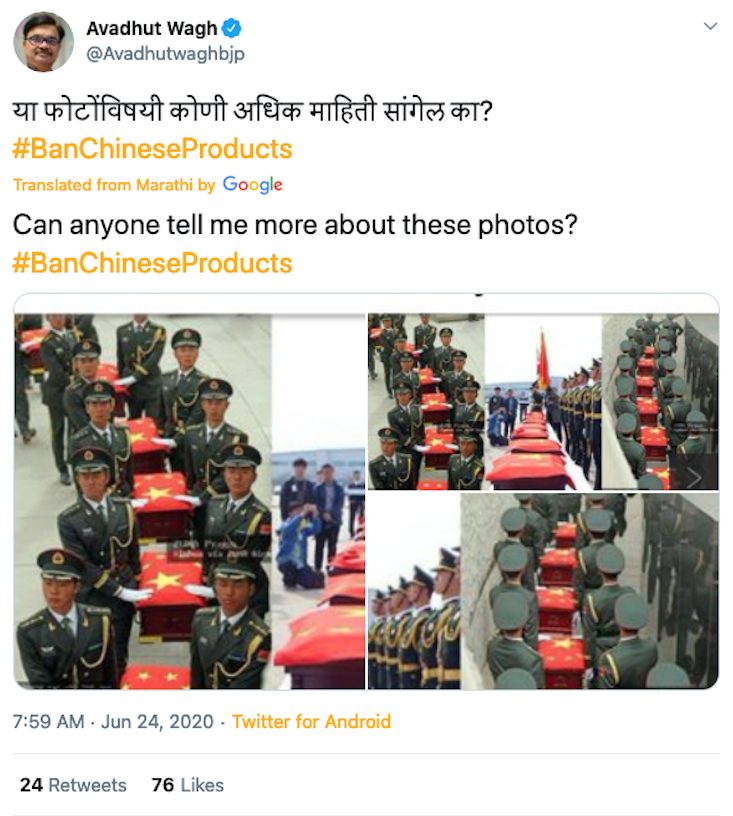
These images are particularly viral on WhatsApp. Alt News has received several fact-check requests on its helpline number (+917600011160) and official Android application.

FACT-CHECK
In this report, we will fact-check each of the images and claims separately.
1. Images of coffins wrapped in Chinese flags
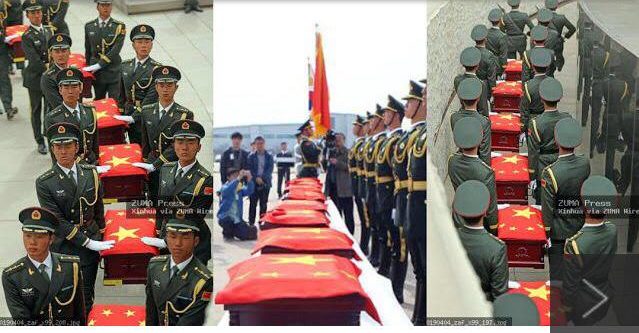
Alt News performed a reverse image search on Google and found that two of these images (image 1 and image 3) were published by China-based news website Zhejiang in May 2019. As per the article, the photos show the sixth batch of burial ceremony of the Chinese People’s Volunteers who were martyred during the Korean War in 1950-53. As per the article, this ceremony was held in Shenyang, capital of Liaoning Province in China.
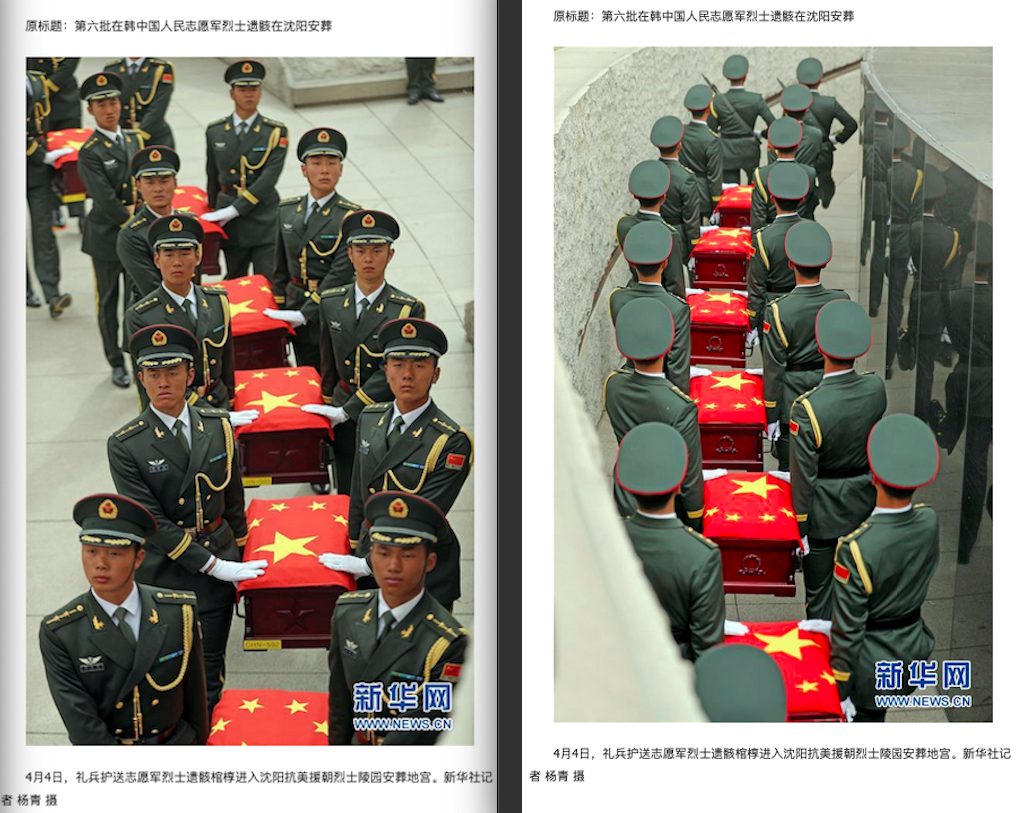
We performed a keyword search and found a report on another China-based news website CGTN about the ceremony. As per the April 7, 2019 report, the bodies of 10 Chinese volunteer soldiers were buried in a ceremony. This was the sixth batch of remains of Chinese soldiers returned by South Korea. The burial ceremony was held at the Martyrs’ Cemetery, Shenyang.
Next, we reverse-searched the second viral image we found that it was published by China Daily in 2016. This is also from a similar burial ceremony. The image was shot at the Incheon Airport in South Korea during the handover of the soldiers’ remains.
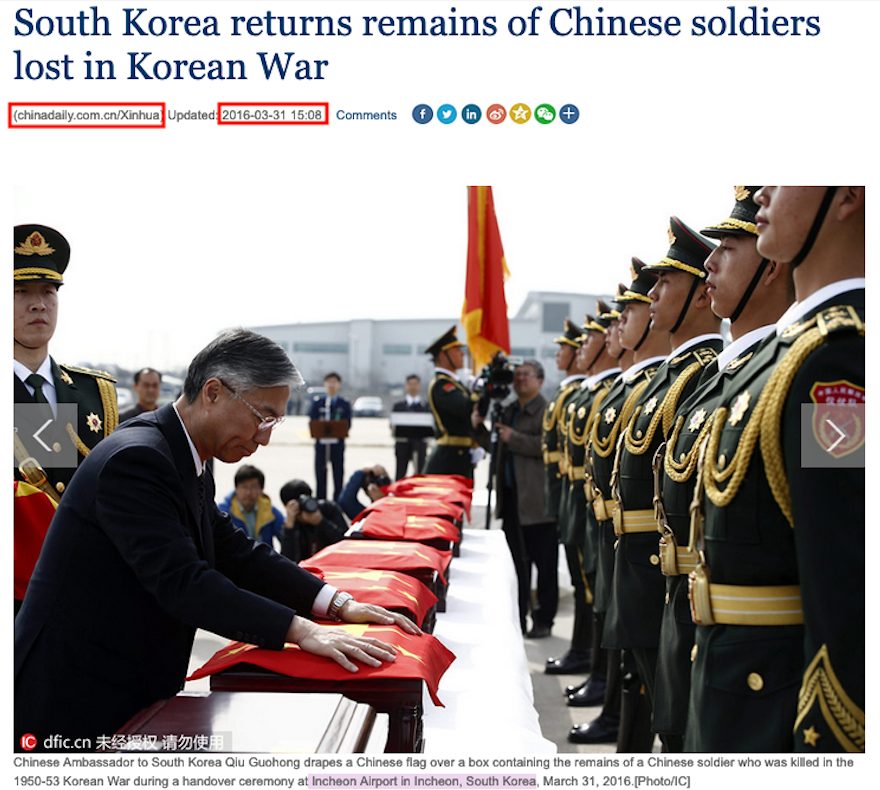
CCTV had uploaded a video of the handover in 2016.
2. Screenshots of Twitter account ‘wang chung 又是这个武汉妹子’

Alt News performed a keyword search in order to find Wang Chung’s tweets but we were unable to find both. This could either mean that the tweets don’t exist or were deleted.
However, we did find a Twitter account with the same name, ‘wang chung 又是这个武汉妹子’. The username of this account is @wangchungbhosda and the last part is a Hindi swear word. Alt News found a Google cache of one of the tweets by this handle which is currently viral in the form of a screenshot. Wang Chung has changed its profile picture but the cached link shows the previous profile picture which is also there in the viral tweet (archive link).
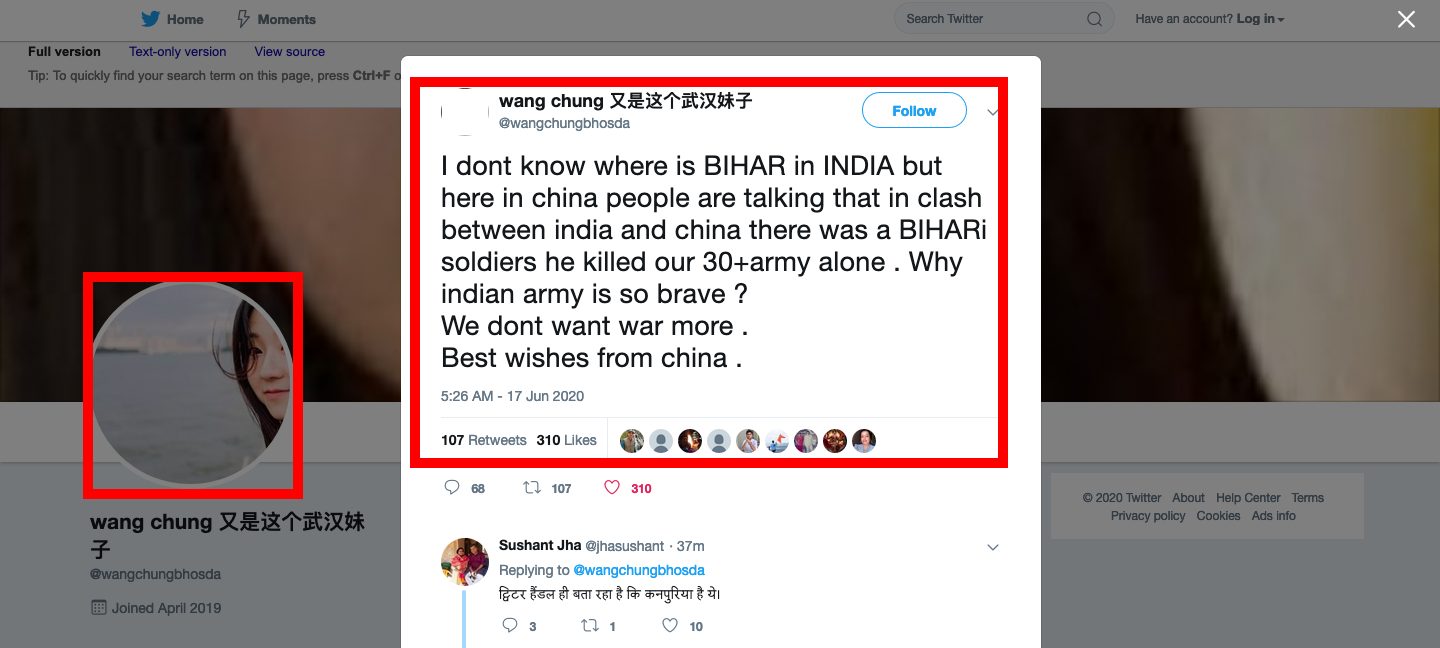
As per the bio, Wang Chung is a parody account and it was created last year in April. But the account’s first tweet dates back to June 17, 2020.
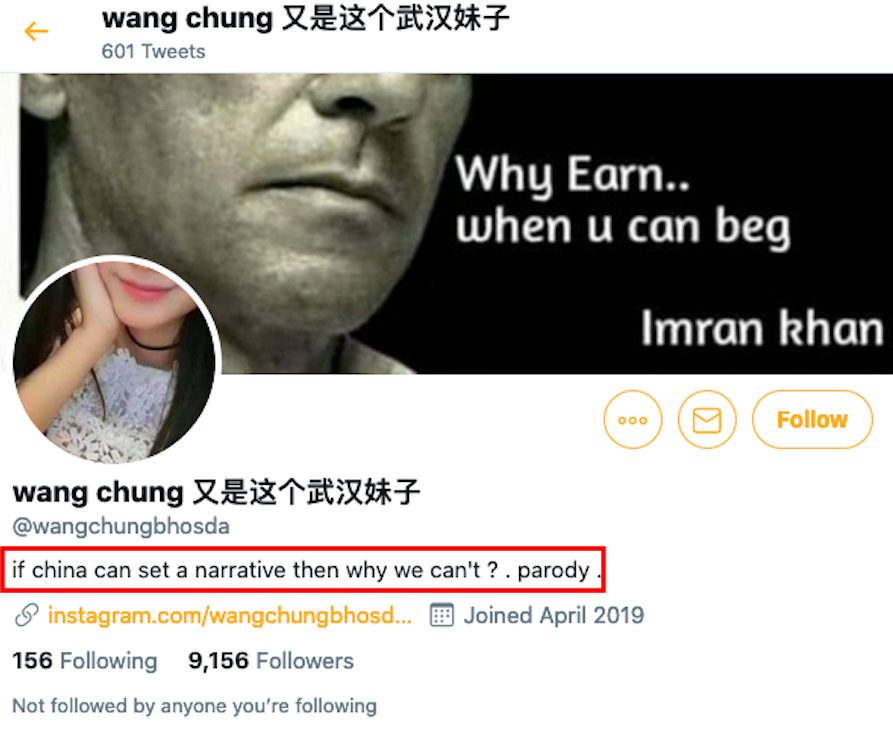
Rummaging the timeline of this account, we observed a pattern that suggests that the user is most likely an Indian. The account has replied to several Hindi tweets and trolled various accounts from India such news channels, journalists and political parties.
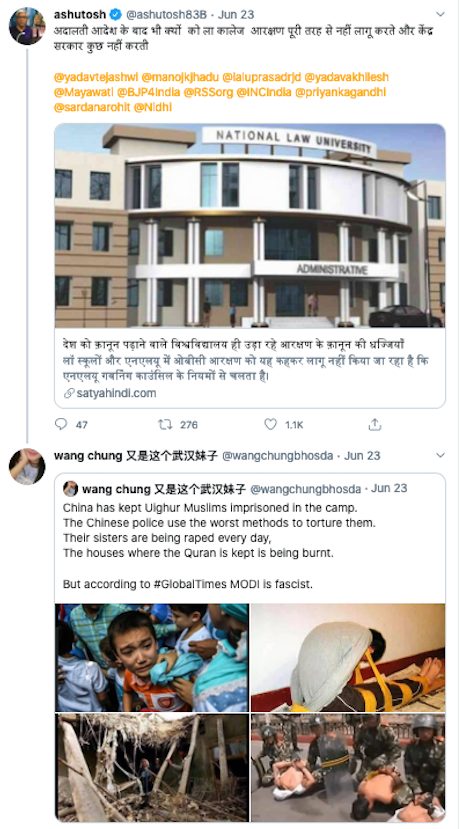
We also found that @wangchungbhosda tweeted the news article seen in the viral screenshot while replying to a tweet by ANI. (archive link)
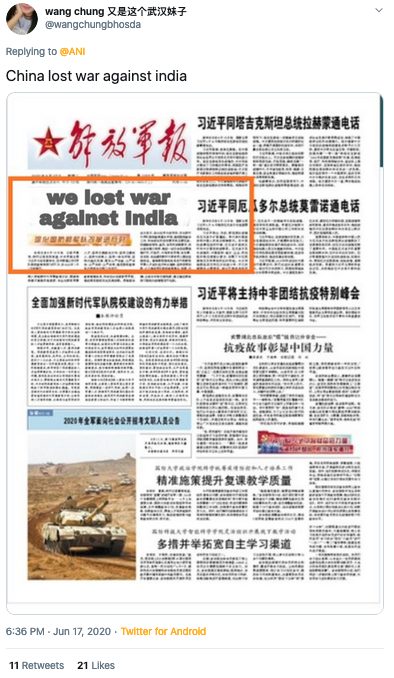
Since the India-China border dispute, several fake accounts impersonating prominent individuals and Chinese nationals have cropped up.
3. List of slain Chinese soldiers
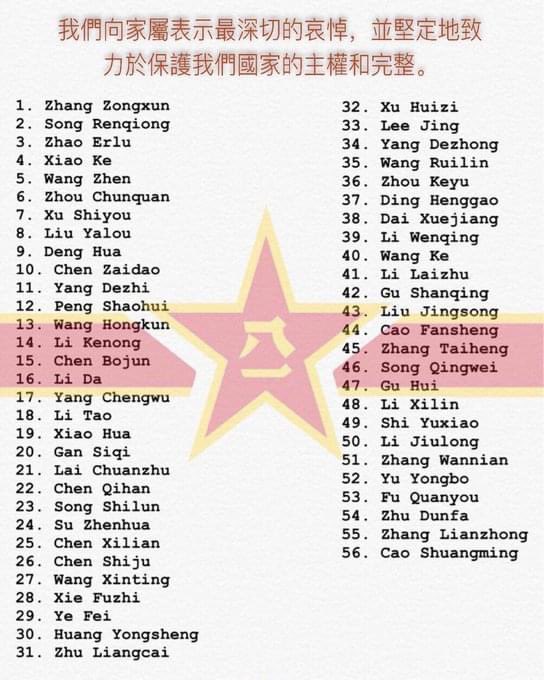
On June 20, Alt News published a report debunking this list. The 56 Chinese names featured here were lifted from a Wikipedia page of generals of the PLA.

Therefore, old photographs and fake lists are viral on social media, especially WhatsApp, to falsely portray Chinese soldiers who died in clashes with India.
Independent journalism that speaks truth to power and is free of corporate and political control is possible only when people start contributing towards the same. Please consider donating towards this endeavour to fight fake news and misinformation.




